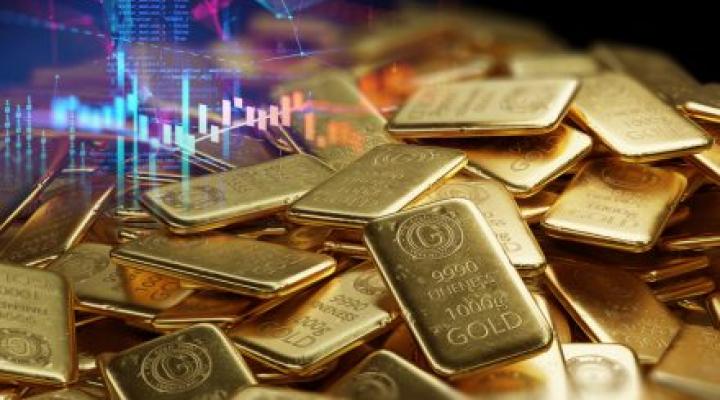Introduction:
Gold has always been a symbol of wealth and a safe haven for investors during times of economic uncertainty. As we navigate through 2024, the gold market is poised for significant changes. In this comprehensive article, we delve into the gold price forecast for the coming years, providing in-depth analysis and insights to help you make informed investment decisions.
Understanding the Factors Influencing Gold Prices
Economic Indicators and Inflation
Economic indicators play a crucial role in determining the price of gold. Factors such as inflation rates, interest rates, and GDP growth are closely monitored by investors. High inflation typically leads to higher gold prices as investors seek to protect their wealth from the eroding purchasing power of fiat currencies. Conversely, when central banks raise interest rates to combat inflation, the opportunity cost of holding non-yielding assets like gold increases, potentially driving prices down.
Geopolitical Tensions
Geopolitical events and uncertainties also have a profound impact on gold prices. Situations such as trade wars, military conflicts, and political instability tend to increase the demand for gold as a safe-haven asset. For instance, the ongoing tensions between major economies can lead to fluctuations in the gold market as investors react to the perceived risks and uncertainties.
Currency Fluctuations
The value of the US dollar is inversely related to gold prices. When the dollar strengthens, gold becomes more expensive for holders of other currencies, which can reduce demand and lead to lower prices. Conversely, a weaker dollar makes gold cheaper and more attractive to international buyers, potentially driving prices up.
Gold Price Forecast for 2024 and Beyond
Short-Term Outlook
In the short term, we anticipate that gold prices will remain volatile. Several key factors will influence this volatility, including the Federal Reserve’s monetary policy, inflation trends, and global economic recovery post-pandemic. Analysts predict that gold could hover around the $1,800 to $2,000 per ounce range, with potential spikes in response to unexpected economic or geopolitical events.
Mid-Term Projections
Looking into the mid-term, gold prices are expected to stabilize and possibly increase. The ongoing economic recovery, coupled with persistent inflationary pressures, will likely support higher gold prices. Additionally, central banks around the world continue to add gold to their reserves, indicating strong institutional demand. By 2025, we could see gold prices approaching the $2,200 per ounce mark, especially if inflation remains above target levels.
Long-Term Forecast
Over the long term, the outlook for gold remains bullish. As global debt levels rise and fiat currencies potentially weaken, gold’s status as a store of value will become increasingly important. Technological advancements and the growing use of gold in industries such as electronics and healthcare will also contribute to sustained demand. By 2030, some analysts project that gold prices could exceed $2,500 per ounce, driven by these structural factors.
See More Artical:Silver Price Forecast
Investment Strategies for Gold
Physical Gold vs. Gold ETFs
Investors can choose between holding physical gold or investing in gold exchange-traded funds (ETFs). Physical gold, such as bars and coins, offers the security of tangible assets but comes with storage and insurance costs. Gold ETFs, on the other hand, provide a convenient and liquid way to gain exposure to gold prices without the need to handle physical metal. Each option has its pros and cons, and the choice depends on individual investment goals and risk tolerance.
Diversification and Portfolio Management
Gold should be considered as part of a diversified investment portfolio. Its historical performance as a hedge against inflation and market volatility makes it an attractive asset for risk management. Financial advisors often recommend allocating a portion of one’s portfolio to gold, typically between 5% to 10%, depending on market conditions and individual financial goals.
Timing the Market
While timing the market is challenging, keeping an eye on economic indicators and geopolitical developments can help investors make informed decisions about when to buy or sell gold. Dollar-cost averaging, a strategy where investors buy gold at regular intervals regardless of the price, can also mitigate the risks associated with market timing.
The Future of Gold: Trends to Watch
Technological Advancements
Advances in technology are set to play a significant role in the future of gold. Innovations in mining and refining processes can reduce production costs and increase supply. Additionally, the growing use of gold in high-tech industries, such as electronics and renewable energy, will likely boost demand.
Sustainable and Ethical Sourcing
As environmental and ethical considerations gain prominence, the gold industry is under pressure to adopt sustainable practices. Responsible sourcing and transparent supply chains are becoming increasingly important to consumers and investors alike. Companies that adhere to these practices may see a positive impact on their market valuation and demand for their gold products.
Central Bank Policies
The policies of central banks will continue to influence gold prices. As central banks diversify their reserves away from traditional fiat currencies, gold will play a more significant role. Monitoring central bank gold purchases can provide insights into future price trends.
Conclusion:
Investing in gold requires careful consideration of various factors, including economic indicators, geopolitical events, and market trends. By staying informed and adopting strategic investment approaches, investors can effectively navigate the gold market and potentially benefit from its long-term appreciation.
Read More Artical For Click Here

